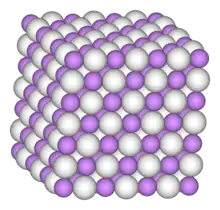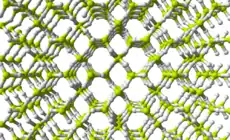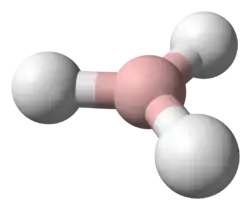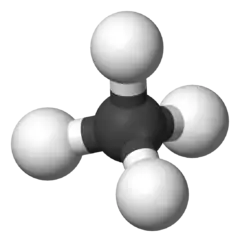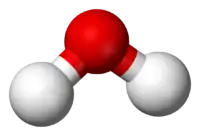Tritiated water
Tritiated water is a radioactive form of water in which the usual protium atoms are replaced with tritium. In its pure form it may be called tritium oxide (T2O or 3H2O) or super-heavy water. Pure T2O is corrosive due to self-radiolysis. Diluted, tritiated water is mainly H2O plus some HTO (3HOH). It is also used as a tracer for water transport studies in life-science research. Furthermore, since it naturally occurs in minute quantities, it can be used to determine the age of various water-based liquids, such as vintage wines.
 | |
 | |
| Names | |
|---|---|
| IUPAC name
[3H]2-water | |
| Systematic IUPAC name
(3H2)Water | |
Other names
| |
| Identifiers | |
3D model (JSmol) |
|
| ChEBI | |
| ChemSpider | |
| MeSH | tritium+oxide |
PubChem CID |
|
CompTox Dashboard (EPA) |
|
| |
| |
| Properties | |
| T2O or 3H2O | |
| Molar mass | 22.0315 g·mol−1 |
| Density | 1.21 g/mL |
| Melting point | 4.48 °C (40.06 °F; 277.63 K)[1] |
| Boiling point | 101.51 °C (214.72 °F; 374.66 K) |
| Hazards | |
| Main hazards |
|
Except where otherwise noted, data are given for materials in their standard state (at 25 °C [77 °F], 100 kPa). | |
| Infobox references | |
The name super-heavy water helps distinguish the tritiated material from heavy water, which contains deuterium instead.
Applications
Tritiated water can be used to measure the total volume of water in one's body. Tritiated water distributes itself into all body compartments relatively quickly. The concentration of tritiated water in urine is assumed to be similar to the concentration of tritiated water in the body. Knowing the original amount of tritiated water that was ingested and the concentration, one can calculate the volume of water in the body.
- Amount of tritiated water (mg) = Concentration of tritiated water (mg/ml) x Volume of body water (ml)
- Volume of body water (ml) = [Amount of tritiated water (mg) - Amount excreted (mg)] / Concentration of tritiated water (mg/ml)
Adverse health effects
Tritiated water contains the radioactive hydrogen isotope tritium. As a low energy beta emitter with a half-life of about 12 years, it is not dangerous externally because its beta particles are unable to penetrate the skin. However, it is a radiation hazard when inhaled, ingested via food or water, or absorbed through the skin.[4][5] HTO has a short biological half-life in the human body of 7 to 14 days, which both reduces the total effects of single-incident ingestion and precludes long-term bioaccumulation of HTO from the environment.[5][6] Biological half-life of tritiated water in the human body, which is a measure of body water turnover, varies with season. Studies on the biological half-life of occupational radiation workers for free water tritium in the coastal region of Karnataka, India show that the biological half-life in the winter season is twice that of the summer season.[6]
References
- W. M. Jones (1952). "The Triple Point Temperature of Tritium Oxide". Journal of the American Chemical Society. 74 (23): 6065–6066. doi:10.1021/ja01143a070.
- "hydrogen (H) - chemical element".
- Paesani, Francesco; Yoo, Soohaeng; Bakker, Huib J.; Xantheas, Sotiris S. (5 August 2010). "Nuclear Quantum Effects in the Reorientation of Water". J. Phys. Chem. Lett. 1 (15): 2316–2321. doi:10.1021/jz100734w.
- Osborne, R.V. (August 2007) Review of the Greenpeace report: "Tritium Hazard Report: Pollution and Radiation Risk from Canadian Nuclear Facilities", nuclearfaq.ca
- Fact Sheet on Tritium, Radiation Protection Limits, and Drinking Water Standards, U.S. Nuclear Regulatory Commission
- Singh, V. P.; Pai, R. K.; Veerender, D. D.; Vishnu, M. S.; Vijayan, P.; Managanvi, S. S.; Badiger, N. M.; Bhat, H. R. (2010). "Estimation of biological half-life of tritium in coastal region of India". Radiation Protection Dosimetry. 142 (2–4): 153–159. doi:10.1093/rpd/ncq219. PMID 20870665.
